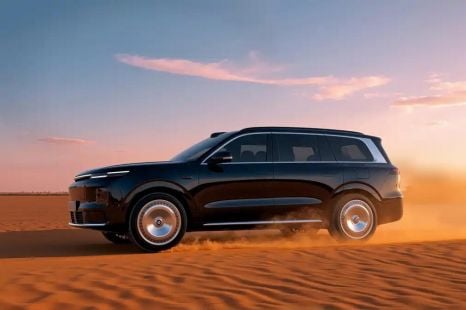

William Stopford
Affordable Chinese brand heading upmarket with new LandCruiser-size SUV
2 Hours Ago
Paying up for the top-spec Lexus LBX brings a suite of luxury extras and all-wheel drive, but it worsens an already shaky value equation.



Quickly see how this car stacks up against its competition. Select any benchmark to see more details.
Where expert car reviews meet expert car buying – CarExpert gives you trusted advice, personalised service and real savings on your next new car.
The LBX is a Lexus for the here and now.

The pint-sized crossover with hybrid power and a sub-$50,000 starting price caters to modern sensibilities, but that doesn’t guarantee success for Lexus in a market that’s tightly contested and relatively unfamiliar to the Toyota-owned Japanese luxury brand.
Repurposing the platform and hybrid powertrains from the Toyota Yaris Cross is a good start, and it’s an eye-catching thing.
The LBX can’t just be a dressed up Toyota though, it has to be a Lexus.
That’s where the Sports Luxury AWD variant comes in. It tops the LBX range, and promises a premium experience.
Whether it’s worth the near-$10,000 upgrade over the base variant… well, let’s find out.
The LBX is the cheapest member of the Lexus range, with a starting price below $50,000 before on-road costs.
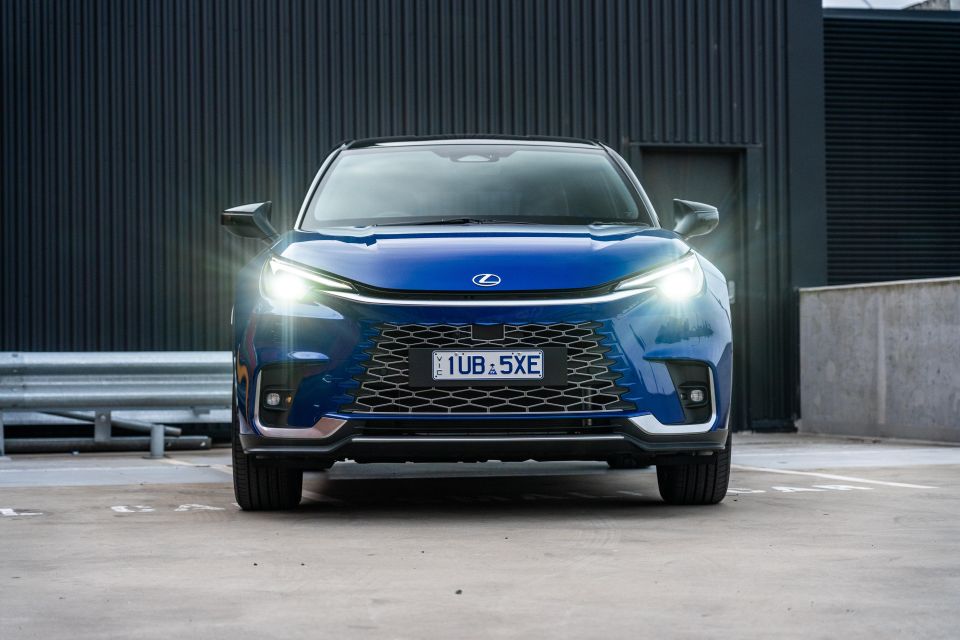
| Model | Price before on-road costs |
|---|---|
| 2025 Lexus LBX Luxury | $47,550 |
| 2025 Lexus LBX Sports Luxury | $52,990 |
| 2025 Lexus LBX Sports Luxury AWD | $56,990 |
To see how the Lexus LBX lines up against the competition, check out our comparison tool.
Buy your new car without the stress. It's fast, simple and completely free.

Great service from Travis and team, second time I have used this business would not hesitate to recommend them to anyone
Craig C.
Purchased a Ford Ranger in Sunshine Coast, QLD
CarExpert helped Craig save $7,224 on his Ford Ranger, now let us save you on your next new car.
Get your BEST priceThe most expensive version of Lexus’ cheapest car feels premium inside, and it ought to at this price point.
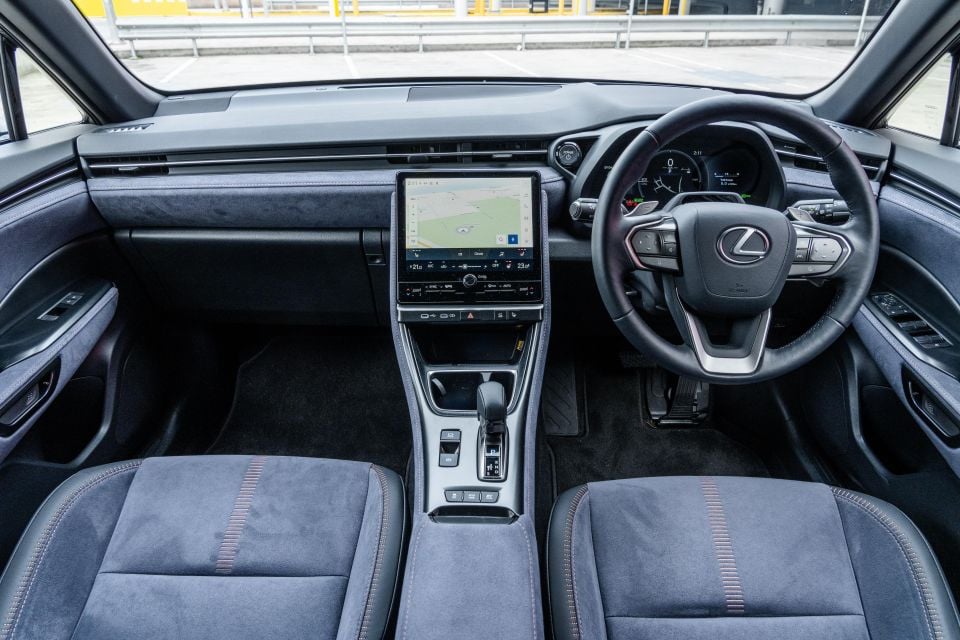
It’s a sea of suede, leather and orange stitching with metallic accents, and most of the hard plastics found in the Yaris Cross sister car are hidden out of sight here.
The high-traffic touch points are especially plush, starting with the steering wheel.
Wrapped in soft leather, it sits comfortably in the hands and comes with heating for freezing Melbourne winter mornings.
The shifter also gets the leather treatment. Suede on the other hand covers the front of the dash, door cards, central tunnel, armrest, and seats.
It’s a matter of personal preference as to whether that’s an upgrade over the faux-leather found throughout the entry grade.
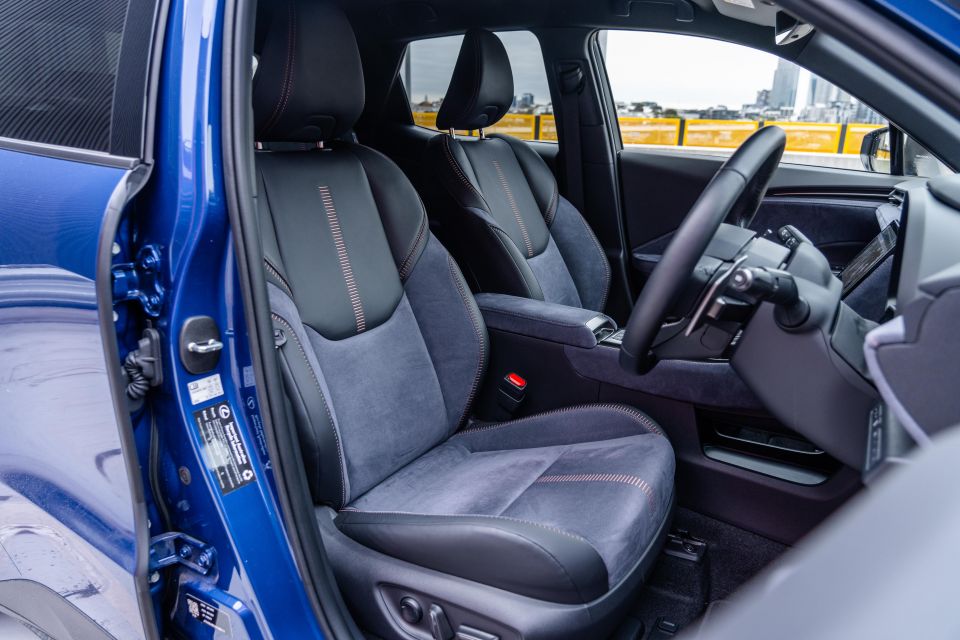
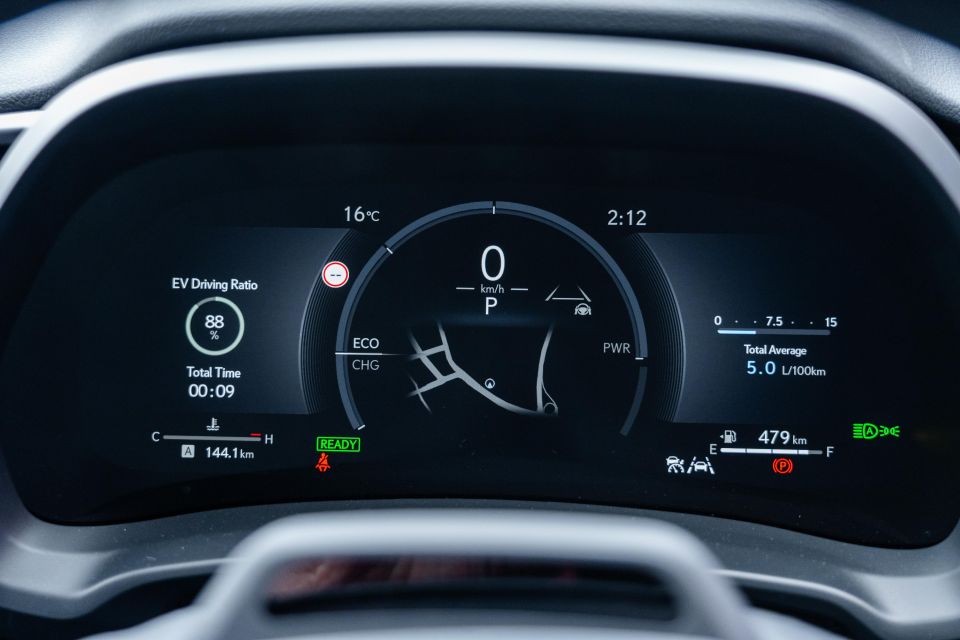
Does the change in materials add to the comfort of the pews? Possibly not, but it looks great and the seats are still well equipped for comfort.
Both front seats are fitted with three-stage heating, while the drivers chair scores eight-way power adjustability with two-way lumbar and memory.
Cars like this live or die by manufacturer attention to detail, and Lexus kicks a goal by fitting soft, inviting head restraints to all seats in the LBX.
An effort has also been made to top the dash with soft plastic rather than hard scratchy stuff, which is welcome.
The technology offered in the LBX is befitting of the Lexus badge. Most functions are accessed through a large central touchscreen that’s close to the driver, responsive, easy to navigate, and crisp in appearance.
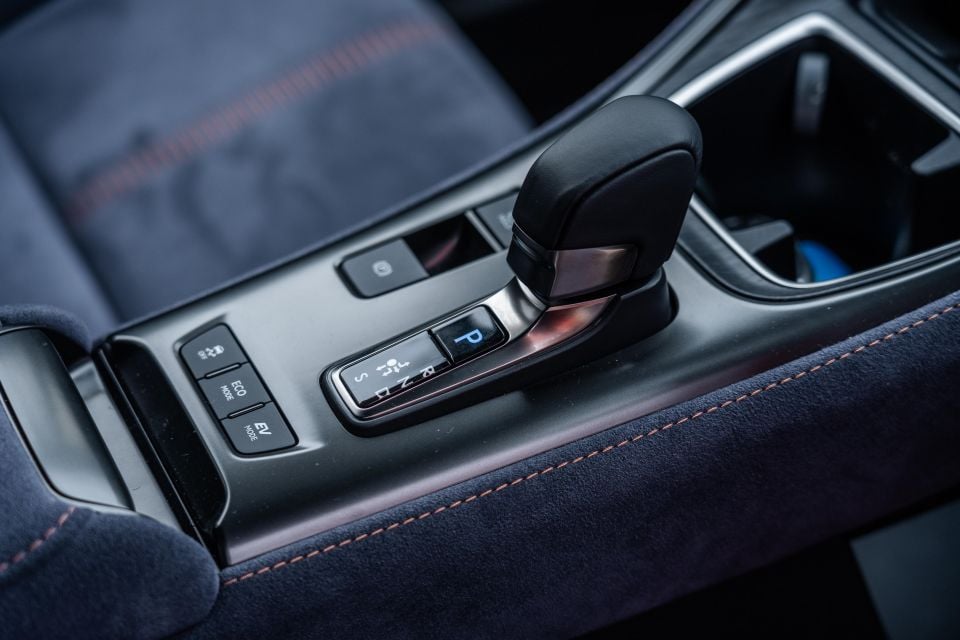
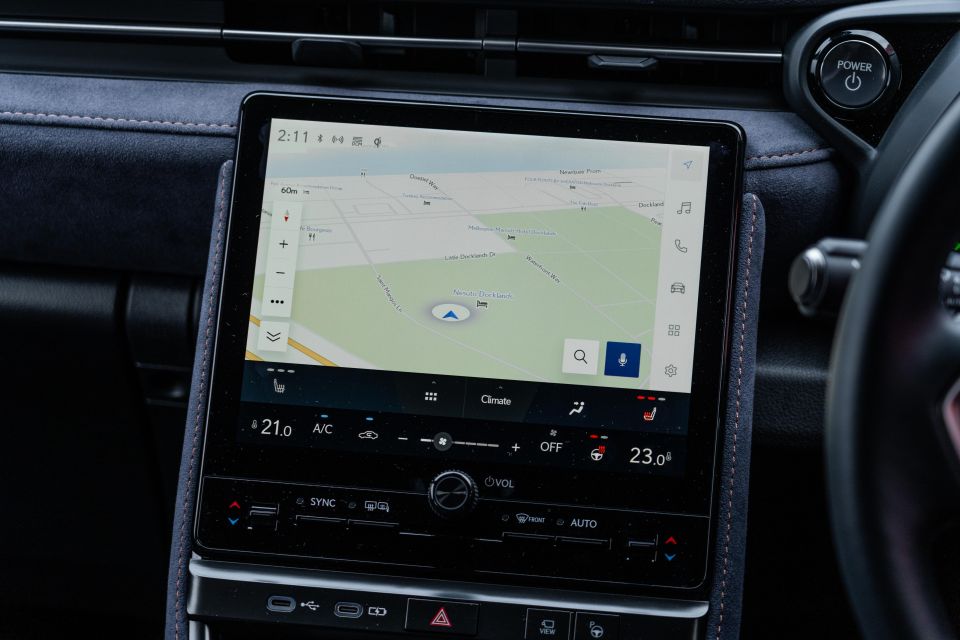
You don’t get something like that in every city crossover, and definitely not in the Yaris Cross.
The system supports satellite navigation, wireless smartphone mirroring, and DAB+ digital radio, joining standard bluetooth, AM, and FM media options.
Wireless smartphone mirroring in particular is a handy inclusion, but I found it difficult to exit Apple CarPlay and access other features.
The digital instrument cluster is a little more rudimentary, with ill-disguised Toyota roots. It’s not hugely configurable, and the information is displayed in a plain way. That does have some benefits, however, such as improved readability, so the driver’s display screen gets a pass.
While we’re talking tech, electric door buttons instead of traditional handles are a fun quirk.
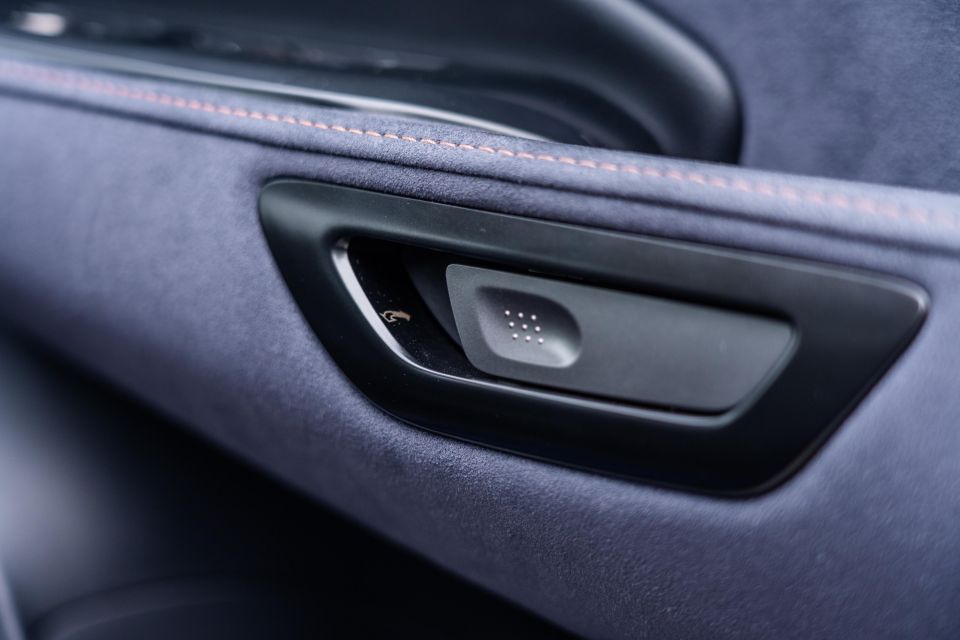
Storage space throughout the cabin is limited, but there are a few useful cubbies and you wouldn’t expect it to be plentiful in a car this size.
The front door bins are good for a water bottle, and drinks can also be stored in a pair of central holders.
There’s a large tray under the centre stack for mobile devices, and a deep armrest cubby for items a little bigger. A wireless phone charger is positioned under the infotainment screen so you’ll never run out of battery.
Neither will your passenger riding shotgun, as two USB-C ports are located in an albeit awkward position above the wireless charger. An additional USB-C and 12V outlet are also hidden under the centre console.
Glovebox space is at a premium, and there’s no sunglasses storage compartment.
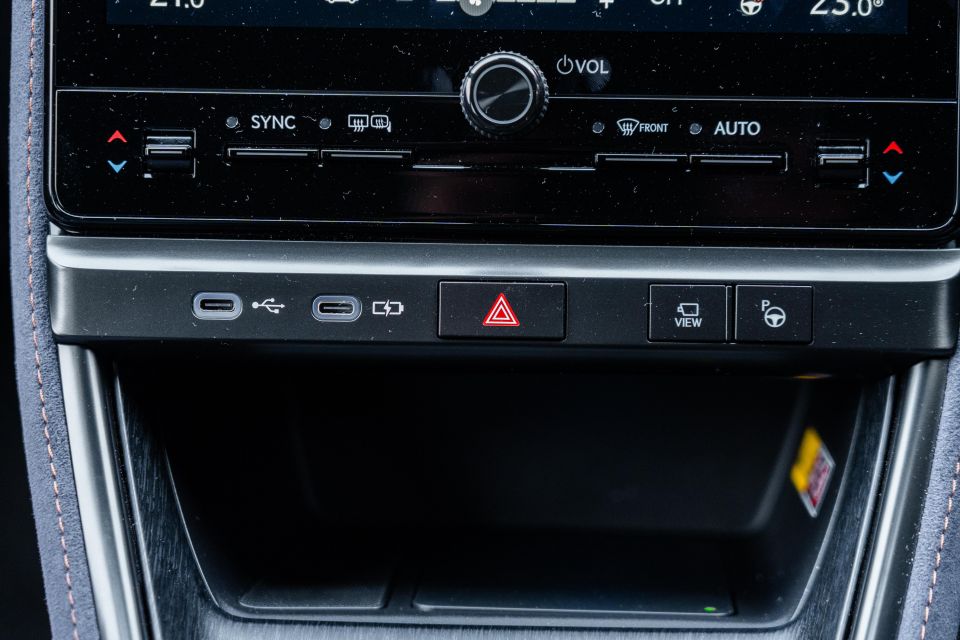
Second-row passengers don’t get the same generous treatment as occupants riding up front.
The seats themselves are comfortable, but leg and headroom are both in short supply.
Adults over six-foot tall will likely graze the ceiling, and even shorter individuals will struggle to get comfortable on longer journeys. At least the seat backs are soft, so you won’t bruise your knees. It’s really a space best suited to children or luggage.
Second-row storage is also compromised. You do get small door bins, but there’s no centre armrest or cupholders. It’s a stuffy space at times, with dark upholstery and a lack of rear air vents.
Two USB-C outlets are included, so at least the second row can keep up with the technological demands of modern children.
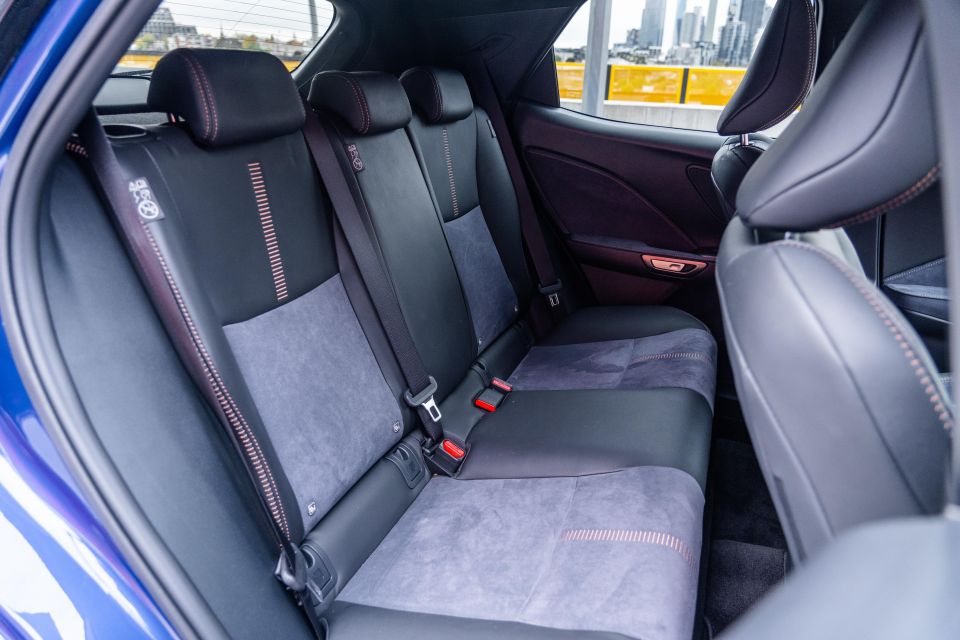
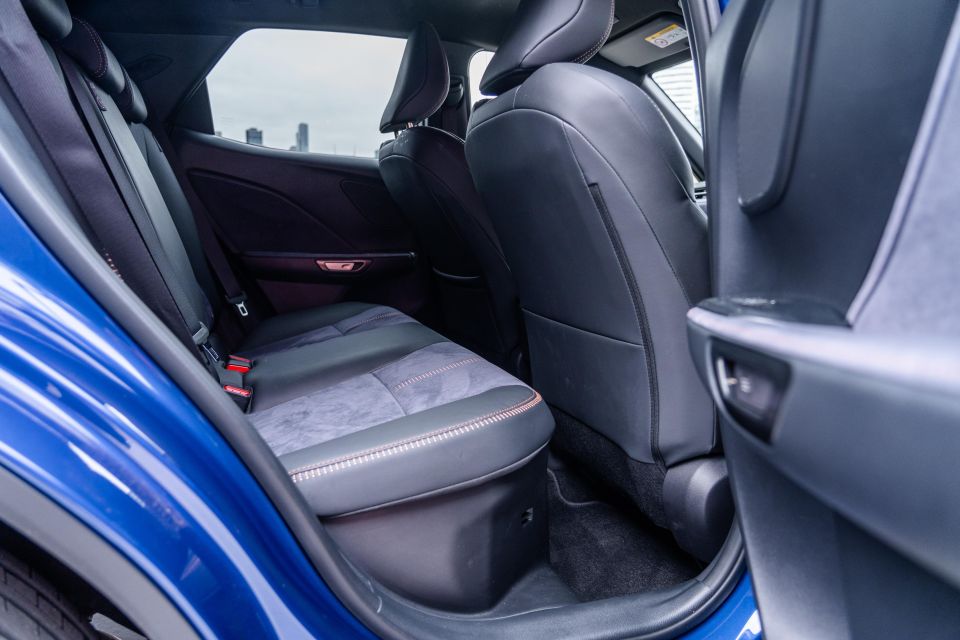
Moving further back to the boot, the diminutive size of the LBX is again on display.
In keeping with its premium positioning, the LBX gets a powered tailgate as standard. Two-wheel drive models have 402L of cargo room, but the figure drops to just 315L for all-wheel drive examples, as tested here.
The boot floor in this flagship variant is noticeably higher, yet a challenging load lip remains, so it’s tougher to place heavy items in the boot. There’s also less space vertically than in two-wheel drive variants.
Other players in the segment offer more boot capacity and practicality. The Audi Q2, Peugeot 2008, Volkswagen T-Roc, and Hyundai Kona Hybrid have 405L, 434L, 392L, and 407L of boot space, respectively.
More luggage capacity is available in the LBX if you take advantage of the 60/40-split folding rear bench, although even then I wouldn’t call the cargo area generous.
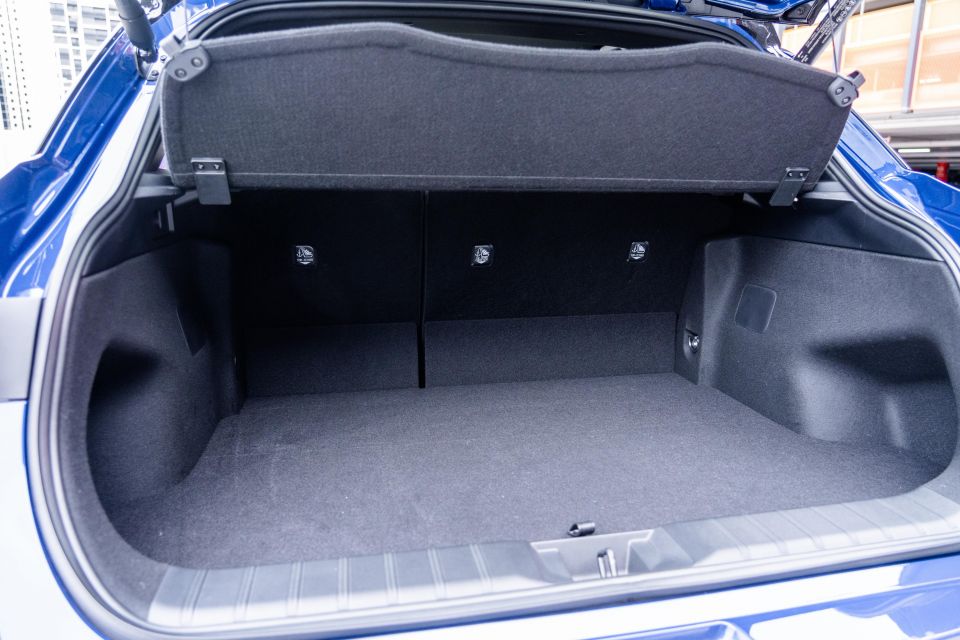
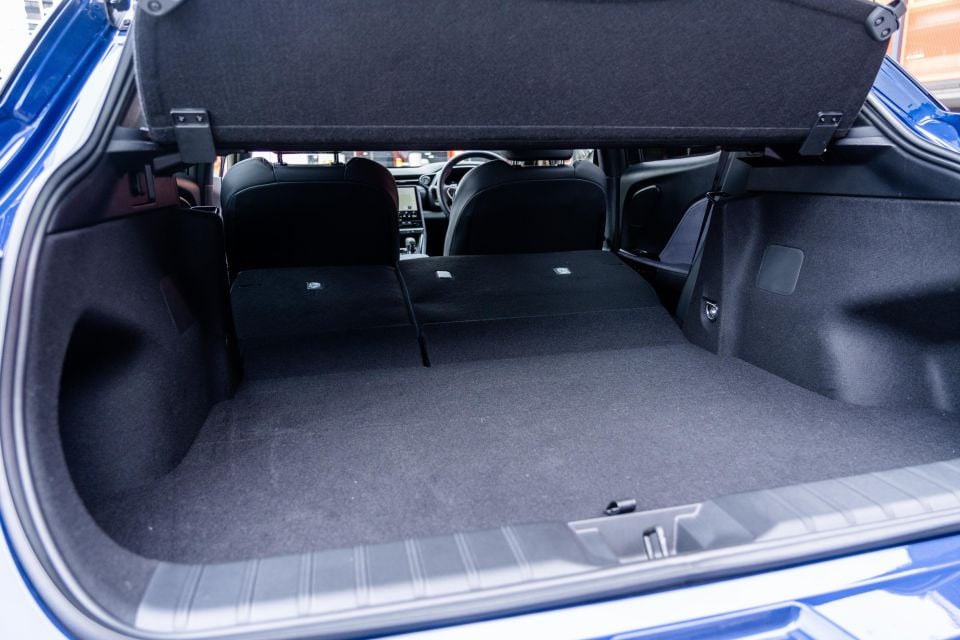
| Dimensions | Lexus LBX Sports Luxury AWD |
|---|---|
| Length | 4190mm |
| Width | 1825mm |
| Height | 1560mm |
| Wheelbase | 2580mm |
| Kerb weight | 1415kg |
| Boot space (seats up) | 315L |
| Boot space (seats folded) | 994L (2WD variants) |
Front-wheel drive Lexus LBX variants are powered by a 1.5-litre three-cylinder petrol engine producing 67kW and 120Nm, as well as a single electric motor generator producing 69kW and 185Nm, fed by a nickel-metal hydride battery.
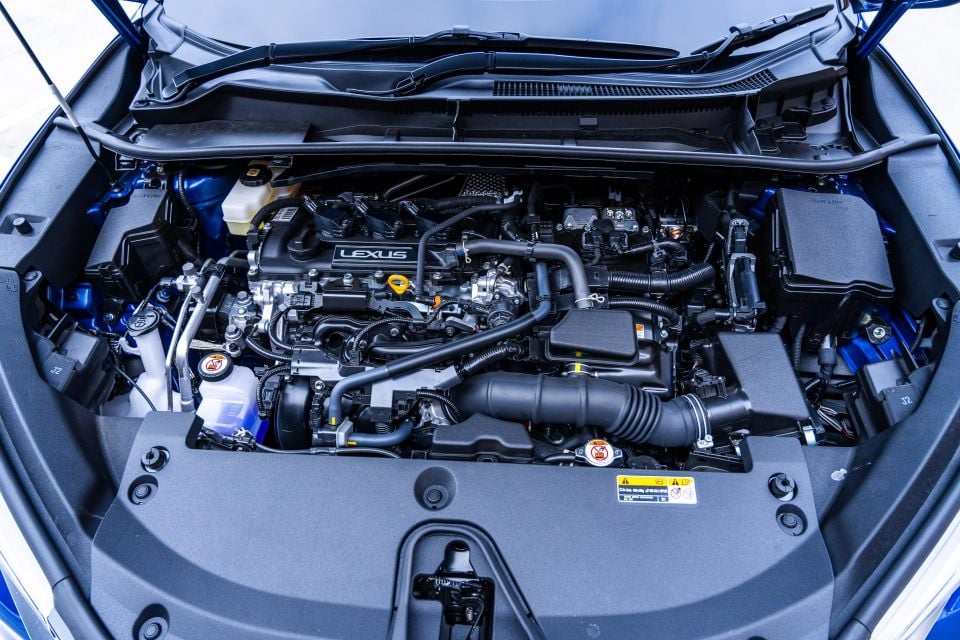
This is all mated to an electronic continuously variable transmission (e-CVT). Total system output is 100kW of power.
The LBX Sports Luxury AWD adds a small rear asynchronous electric motor that produces 4.7kW and 52Nm. The total system output is still 100kW.
Lexus claims the LBX 2WD variants can do the 0-100km/h sprint in 9.2 seconds, whereas the Sports Luxury AWD is said to complete the 0-100km/h dash in 9.6 seconds. Top speed for both is 170km/h.
| Technical specifications | Lexus LBX Sports Luxury AWD |
|---|---|
| Engine | 1.5-litre 3cyl hybrid |
| Engine outputs | 67kW / 120Nm |
| Electric motor outputs | 69kW / 185Nm + 4.7kW / 52Nm |
| Combined hybrid power | 100kW |
| Transmission | Electronic continuously variable transmission (e-CVT) |
| Driven Wheels | All-wheel drive |
| Kerb weight | 1415kg |
| Fuel economy (claimed) | 3.8L/100km |
| Fuel economy (as tested) | 5.0L/100km |
| Fuel tank | 36L |
| Octane rating | 91 RON |
To see how the Lexus LBX lines up against the competition, check out our comparison tool.
The Lexus LBX is a small crossover and for the most part it drives like one, though there are a couple of substantial upgrades that set it apart from its rivals. Refinement at city speeds is one of them.
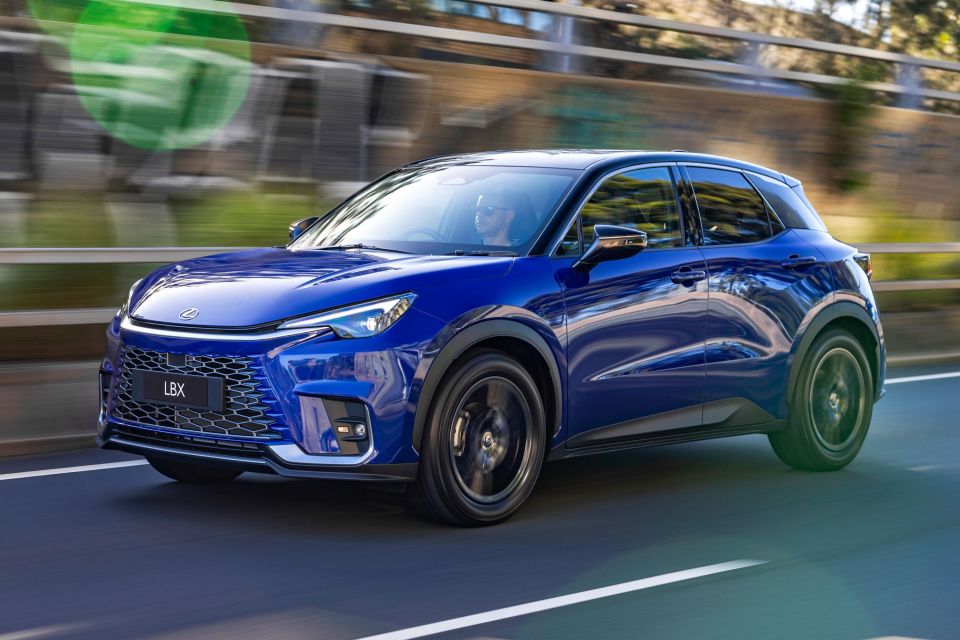
One major drawcard of the hybrid powertrain in the LBX is that it gives the car an unmistakably Lexus quietness at low speeds, cruising in silence up to around 30km/h.
It’s a point of difference when compared to pure-combustion rivals like the Audi Q2, Volkswagen T-Roc, and Peugeot 2008, not that they’re excessively noisy cars around town.
Even when the three-cylinder engine kicks in, it’s not intrusive. As such, it’s easy to enjoy the premium sound system, or converse with passengers.
You won’t be bothered by urban road imperfections either. The LBX handles bumps and potholes with ease, feeling like a larger SUV in the process. There’s no bounce, and certainly no crashing over speed humps.
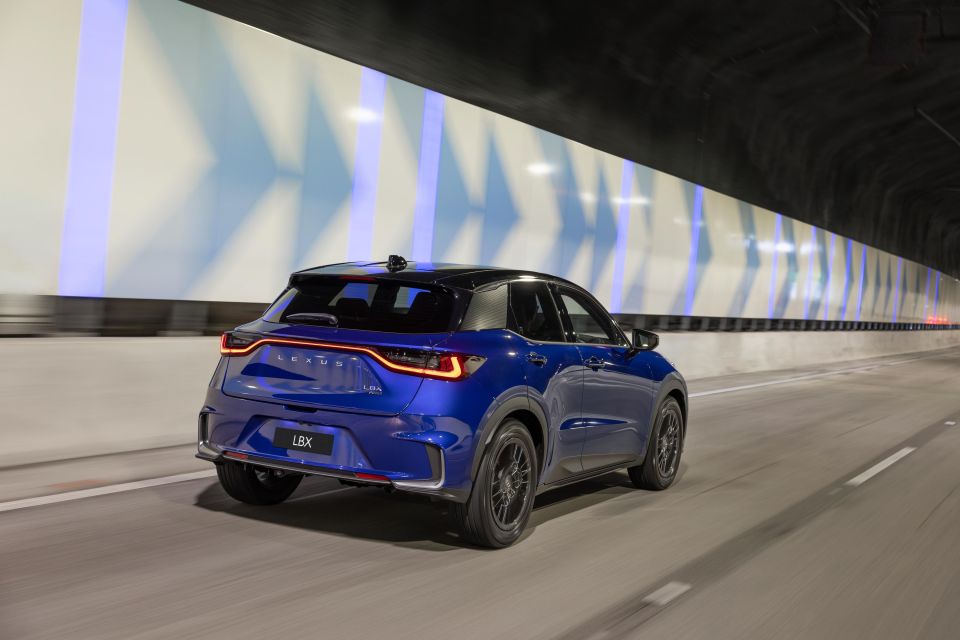
Light steering makes it easier to negotiate tight turns and lane changes when inconsiderate peak-hour commuters make your life more stressful than it needs to be.
The LBX ticks boxes in the cut-and-thrust of urban driving, but what about out on the open road? Unfortunately, that’s where cracks appear.
When the three-cylinder is required to step up and do some grunt work on the highway, it undermines the positive characteristics of the electric motor it’s meant to complement.
With just 100kW combined at your disposal, this little Lexus is far from quick. At half throttle it doesn’t have the shove to reach triple figure speeds in a timely manner, and when you press your right foot down a little further the engine makes a jarring racket.
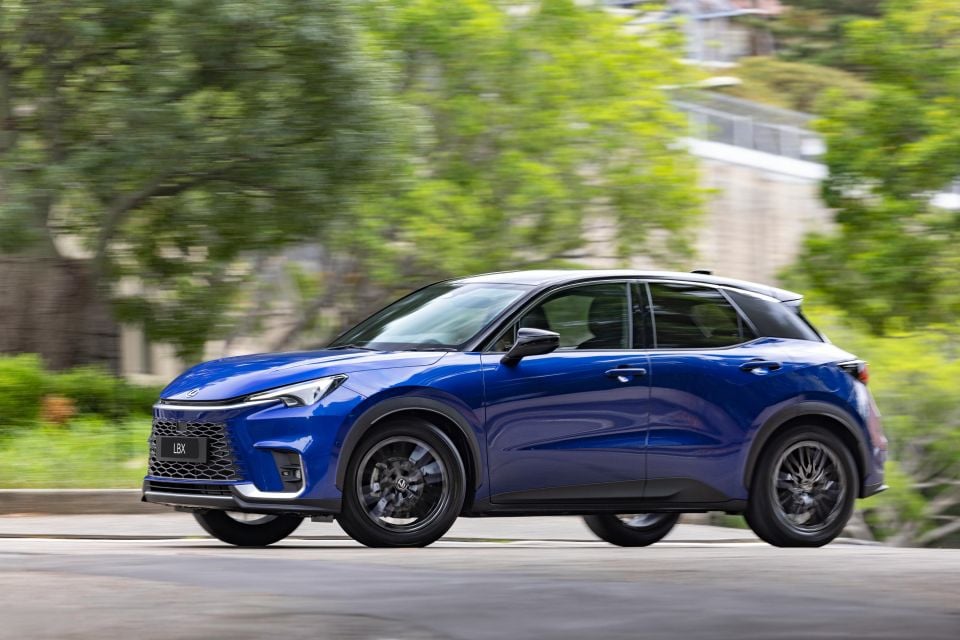
Where expert car reviews meet expert car buying – CarExpert gives you trusted advice, personalised service and real savings on your next new car.
It still struggles to make progress even at full throttle, so it’s best to plan overtaking manoeuvres in advance.
The volume and tone of the engine noise puts you straight back in the driver’s seat of a Yaris Cross, and that’s disappointing when you sign up for a luxurious experience.
The underpowered and raucous petrol engine also undermines the efficiency gains that a hybrid powertrain is meant to typically bring. But we did see an average fuel consumption of 5.0L/100km, which is still pretty good.
Once at cruising speed, things calm down again. The LBX feels settled at 100km/h, while the cabin is mostly protected from tyre and wind noise.
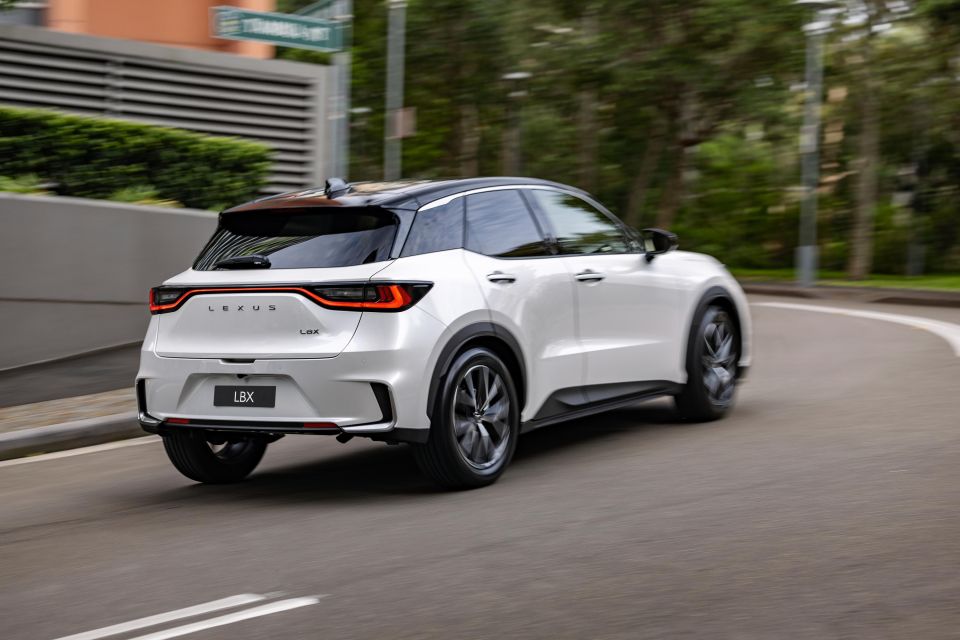
I can’t say the same about some other light SUVs that feel well… light.
As you’d expect, adaptive cruise control comes as standard, which is perfect for highway cruising. What’s not so ideal is the over-sensitive nature of the driver monitoring system.
The big differentiator between this flagship and other variants in the LBX range is the all-wheel drive system. In order to have the privilege you need to fork out an additional $4000 over the Sports Luxury 2WD… that’s a significant price gap.
I would argue all-wheel drive isn’t a massive selling point in a car like this. As an urban runabout, front-wheel drive is perfectly adequate from a traction and handling standpoint, and it’s advantageous from an acceleration, fuel efficiency, and boot space perspective.
There are two different Lexus LBX trim levels offered locally. The entry-level Luxury can only be had with front-wheel drive, whereas the flagship Sports Luxury is available with either front- or all-wheel drive.
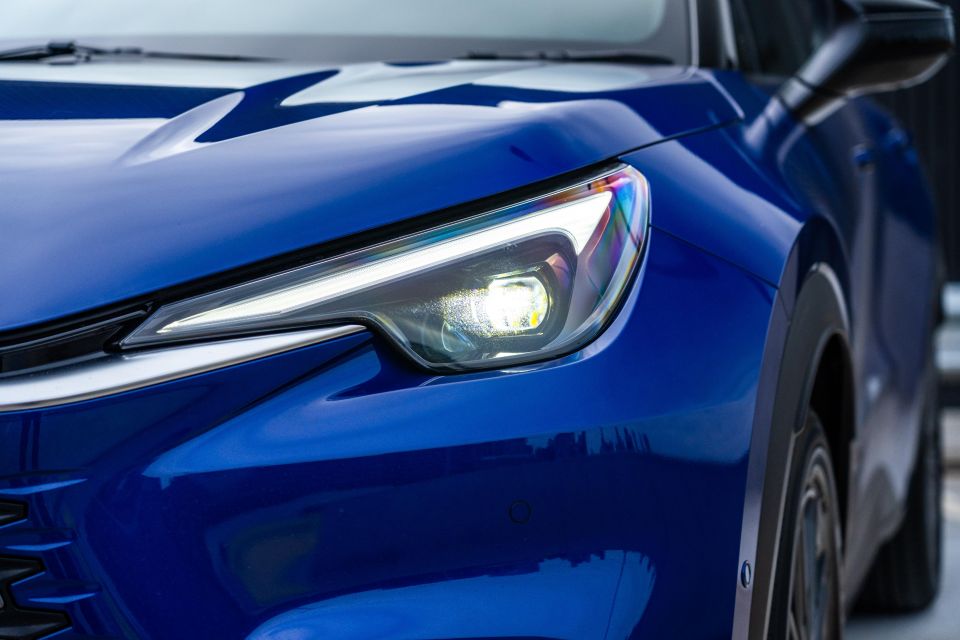
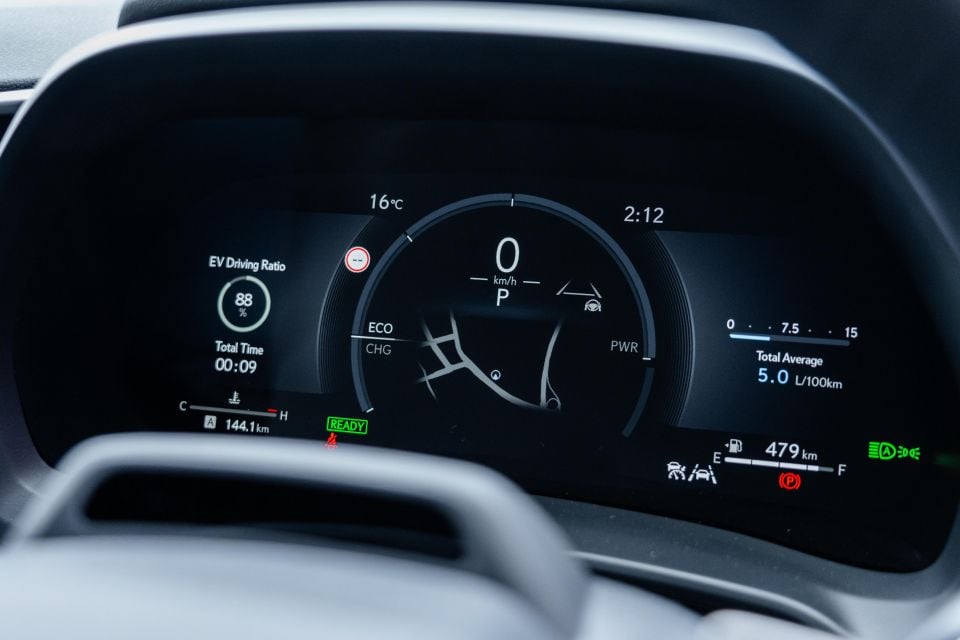
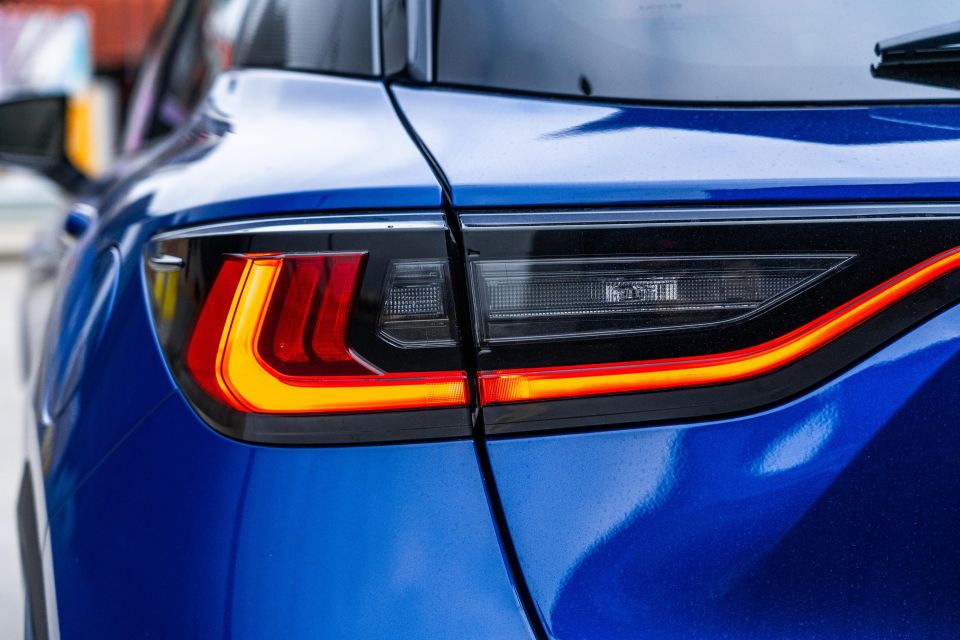

Lexus LBX Luxury 2WD highlights:
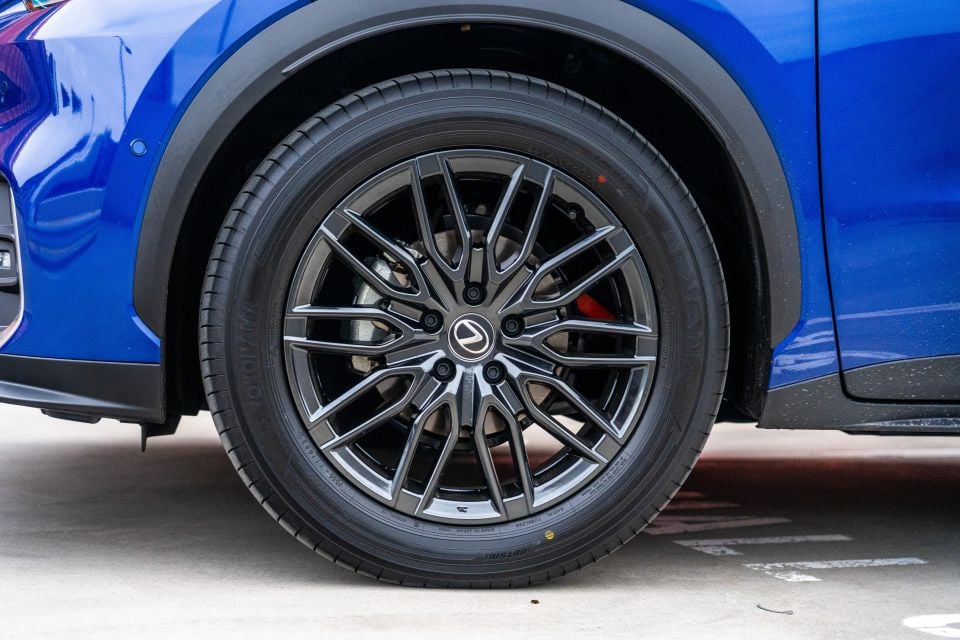
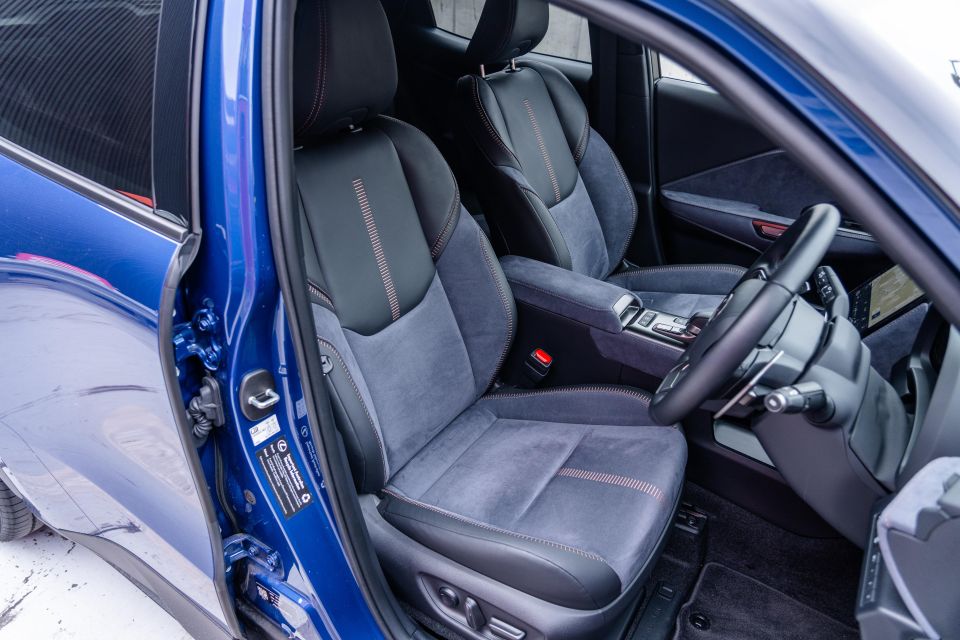
LBX Sports Luxury 2WD adds:
LBX Sports Luxury AWD adds:
The Lexus LBX hasn’t been crash-tested by ANCAP or Euro NCAP at this stage.
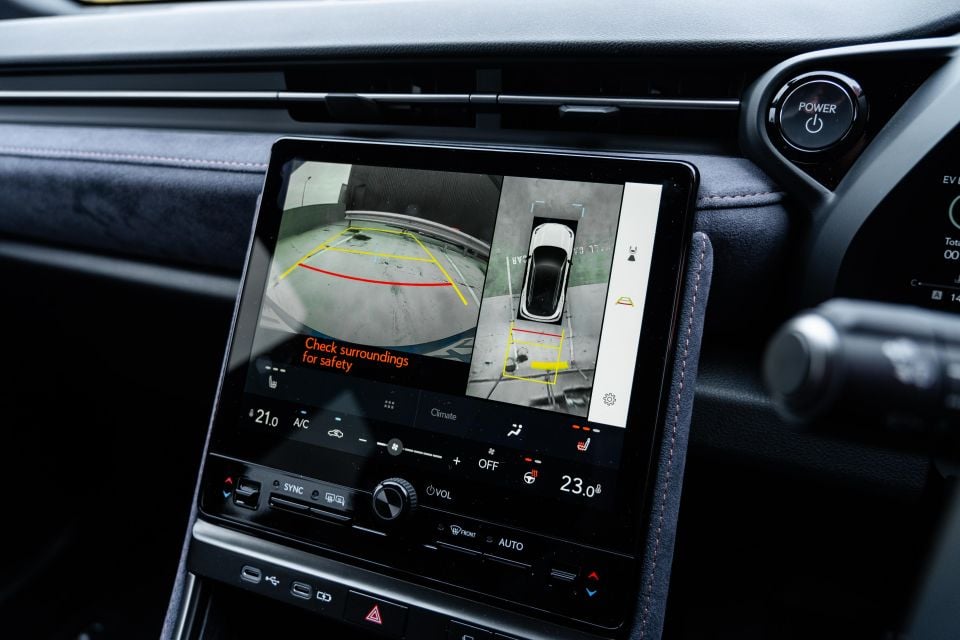
Standard safety equipment:
The LBX Sports Luxury adds a semi-autonomous parking assist.
All Lexus LBX variants also receive a three-year complimentary subscription to Lexus Connected Services. It offers customers real-time vehicle information, remote functionality, and emergency calling.
The Lexus LBX is covered by a five-year, unlimited-kilometre warranty like the rest of the Lexus lineup.

Logbook services are required every 12 months or 15,000km, whichever comes first. The first five services are capped at $595 each.
A three-year complimentary Encore subscription is also provided at no extra cost. It includes roadside assistance, complimentary service loan car, Ampol fuel discounts, as well as exclusive lifestyle event offers.
| Aftersales Program | Lexus LBX |
|---|---|
| Warranty | 5 years, unlimited kilometres |
| Service intervals | 12 months or 15,000km |
| Capped price servicing | Five years |
| Annual capped price service cost | $595 |
Buy your new car without the stress. It's fast, simple and completely free.

Great service from Travis and team, second time I have used this business would not hesitate to recommend them to anyone
Craig C.
Purchased a Ford Ranger in Sunshine Coast, QLD
CarExpert helped Craig save $7,224 on his Ford Ranger, now let us save you on your next new car.
Get your BEST priceThe new LBX opens up the Lexus brand to a broader audience of new car buyers, and that can only be a good thing. However, the flagship Sports Luxury AWD is not the pick of the range.
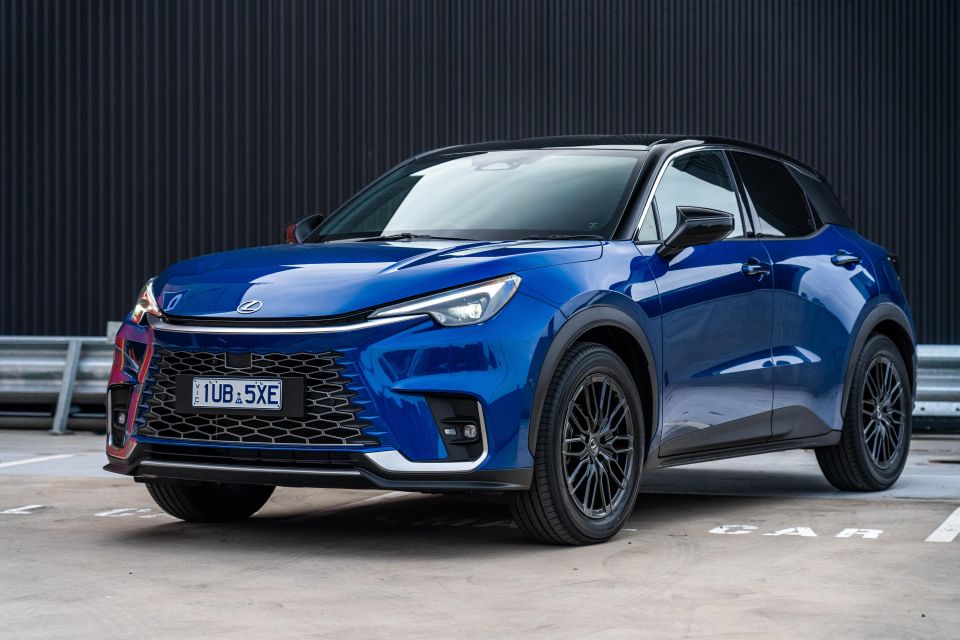
The addition of all-wheel drive doesn’t markedly improve the driving experience, certainly not to the tune of a $4000 premium.
Upgrading from the Luxury to the Sports Luxury isn’t a no-brainer either, as it’s a matter of personal preference whether most of the additions count as upgrades.
Even base two-wheel drive examples don’t scream ‘pick me’.
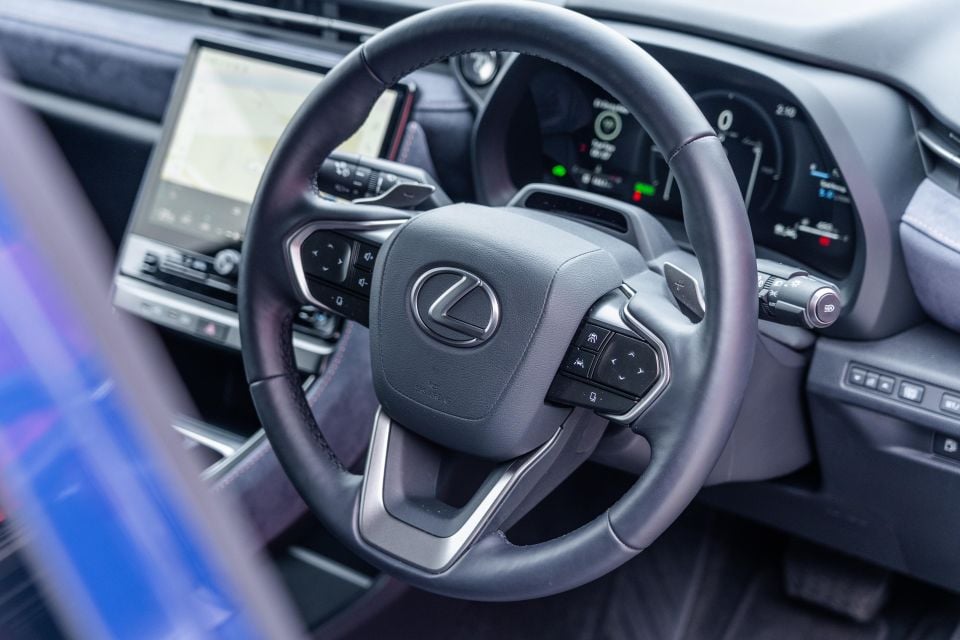
The LBX is stylish, comfortable and well-equipped, but the three-cylinder engine doesn’t suit the character of the car and interior space is lacking.
At this price point there’s no shortage of alternatives. If you want European refinement in compact SUV packaging, have a look at the Audi Q2 or Peugeot 2008.
Set on hybrid power? You could also consider a Hyundai Kona Hybrid with all the fruit.

Interested in buying a Lexus LBX? Get in touch with one of CarExpert’s trusted dealers here
Click the images for the full gallery
MORE: Everything Lexus LBX
Where expert car reviews meet expert car buying – CarExpert gives you trusted advice, personalised service and real savings on your next new car.
Josh Nevett is an automotive journalist covering news and reviews, with a background in motorsport journalism.


William Stopford
2 Hours Ago
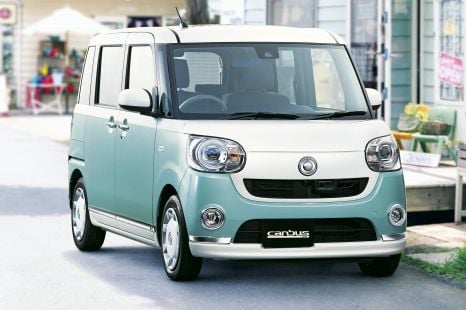

Derek Fung
2 Hours Ago
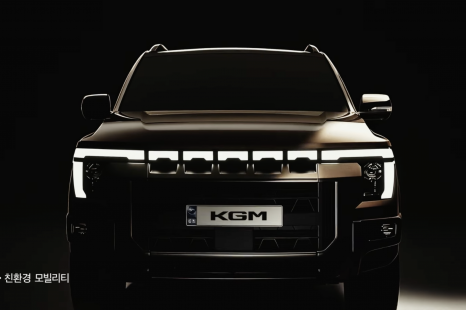

William Stopford
4 Hours Ago
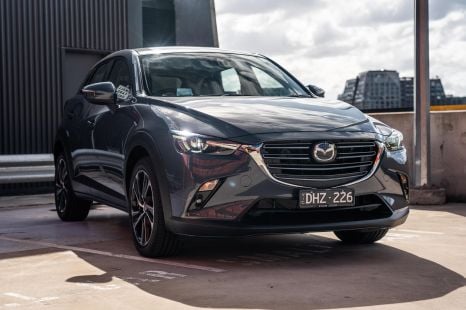

Josh Nevett
8 Hours Ago


Alborz Fallah
17 Hours Ago


Marton Pettendy
19 Hours Ago